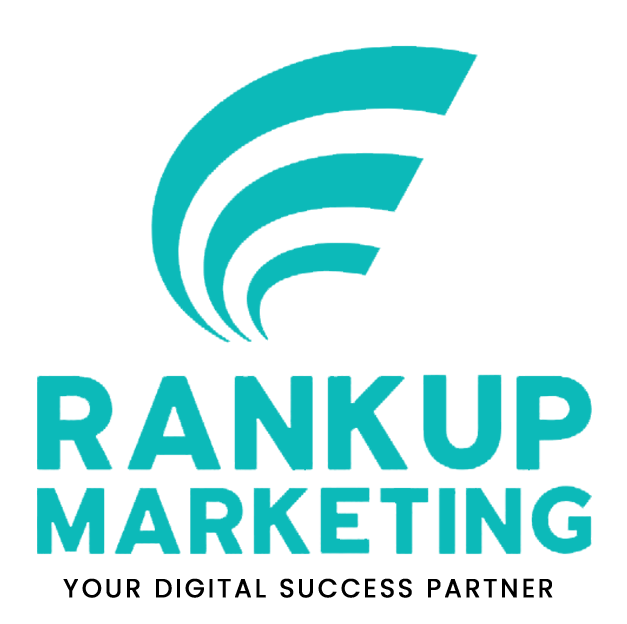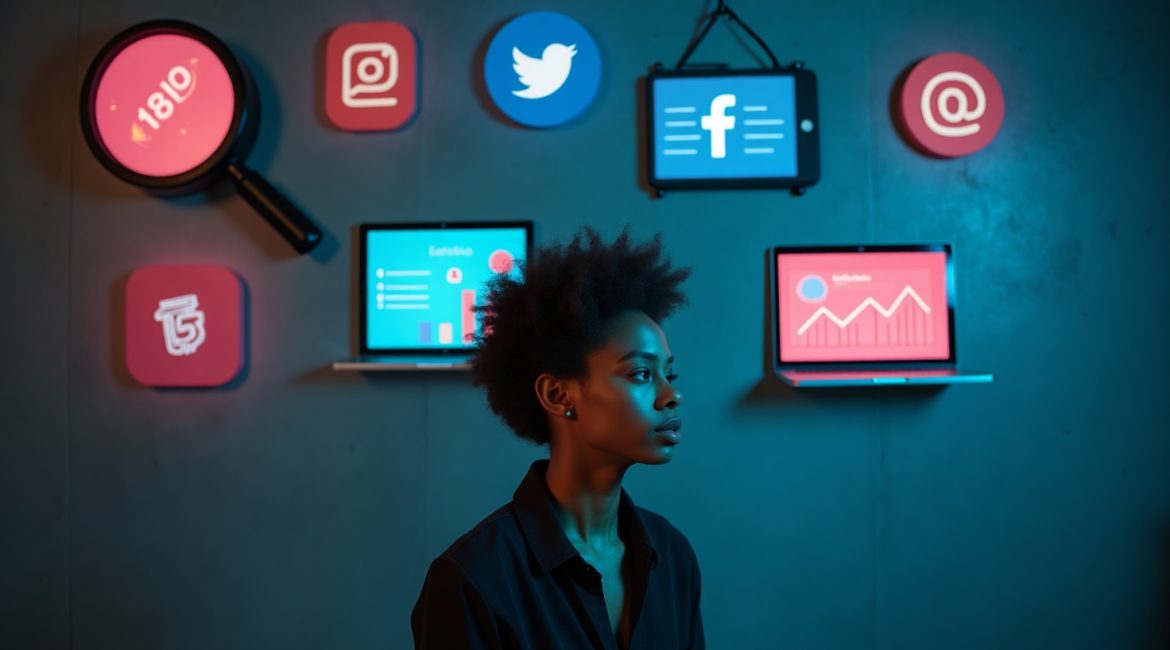From SEO to Social Media: A Comprehensive Guide to Digital Marketing
In the age of the internet and smartphones, digital marketing has become the cornerstone of modern business strategy. Whether you’re a small business owner, a freelancer, or part of a large enterprise, understanding the fundamentals of digital marketing is crucial for success in today’s competitive landscape.
This guide answers the four most searched questions about digital marketing with data-backed insights to help you stay informed and ahead of the curve.
1. What is Digital Marketing?
Digital marketing refers to the use of digital channels, platforms, and technologies to promote products, services, or brands to consumers. It involves all marketing efforts that use the internet or electronic devices, including search engines, social media, email, websites, and mobile apps.
✅ Stat: According to Statista, digital advertising spending worldwide reached $626.9 billion in 2023, and it’s expected to grow to over $835 billion by 2026.
Unlike traditional marketing, digital marketing allows businesses to interact directly with their audience in real time, personalize their messaging, and measure performance with precision.
Core Components of Digital Marketing:
- Websites
- SEO (Search Engine Optimization)
- Content Marketing
- Social Media Marketing
- Paid Ads (PPC)
- Email Marketing
- Affiliate Marketing
- Mobile Marketing
- Analytics & Conversion Rate Optimization
2. Why is Digital Marketing Important?
Digital marketing is essential because it enables businesses to reach their target audience where they spend most of their time—online. With billions of people using search engines and social platforms daily, digital marketing creates countless touchpoints for customer engagement.
📊 Fact: As of 2024, over 5.35 billion people (66% of the global population) use the internet, and over 4.95 billion are active on social media (DataReportal).
Key Benefits:
- Global Reach: Market your business beyond geographical boundaries.
- Cost-Effective: 61% of marketers say improving SEO and growing their organic presence is their top inbound marketing priority (HubSpot).
- Measurable Results: Track impressions, clicks, and conversions in real-time.
- Personalization: Target specific audiences based on behavior, interests, or location.
- High ROI: Email marketing delivers an average ROI of $36 for every $1 spent.
✅ Case in Point: Businesses that blog get 67% more leads than those that don’t (DemandMetric).
3. What are the Types of Digital Marketing?
Digital marketing includes several channels, each serving a specific purpose in the customer journey. Here are the major types:
1. Search Engine Optimization (SEO)
Optimizing your website to rank higher in search engine results for relevant keywords.
- Fact: 68% of online experiences begin with a search engine (BrightEdge).
2. Pay-Per-Click Advertising (PPC)
Paid ads on platforms like Google, Facebook, Instagram, and LinkedIn to drive traffic instantly.
- Fact: Google Ads has an average ROI of 200%, meaning $2 for every $1 spent (WordStream).
3. Content Marketing
Creating valuable content (blogs, videos, infographics) to attract and retain an audience.
- Fact: Companies with blogs produce 67% more leads than those without (HubSpot).
4. Social Media Marketing
Using platforms like Facebook, Instagram, LinkedIn, TikTok, and Twitter to connect with your audience.
- Fact: 90% of brands use social media to build brand awareness (Statista).
5. Email Marketing
Sending personalized and targeted messages to subscribers.
- Fact: Email users are expected to reach 4.73 billion by 2026 (Statista).
6. Affiliate Marketing
Promoting products through affiliates (influencers, bloggers) and paying a commission for conversions.
- Fact: Affiliate marketing is responsible for 16% of eCommerce sales in the US.
7. Mobile Marketing
Reaching users via SMS, in-app ads, push notifications, or mobile-optimized content.
- Fact: Over 60% of all Google searches are done via mobile devices.
4. How Does Digital Marketing Work?
Digital marketing works by connecting your brand with your target audience at the right time and place—online. Here’s a simplified breakdown of the digital marketing process:
Step 1: Audience Research
Understand your ideal customer’s demographics, interests, and online behavior.
Step 2: Strategy Creation
Choose the right channels (SEO, PPC, social, email, etc.) based on your goals (brand awareness, lead generation, sales).
Step 3: Content Development
Create tailored content (blogs, videos, ads) that adds value to your audience.
Step 4: Campaign Execution
Use digital tools to launch and manage campaigns across multiple platforms.
Step 5: Performance Measurement
Track metrics like clicks, impressions, bounce rate, and conversions using tools like Google Analytics, Meta Ads Manager, or HubSpot.
Step 6: Optimization
Use the insights to tweak strategies and improve performance continuously.
💡 Fact: Companies that automate lead management see a 10% or greater increase in revenue in 6–9 months (Strategic IC).
🧠 Final Thoughts
Digital marketing is no longer optional—it’s essential. It levels the playing field for small businesses, enables data-driven decisions, and helps build long-term customer relationships. Whether you’re just starting or refining your existing strategies, a strong digital marketing foundation will help you thrive in the digital era.
Frequently Asked Questions (FAQs)
Here are 50 of the most searched questions about digital marketing worldwide, along with concise answers.
1. What is digital marketing?
Digital marketing refers to marketing efforts that use digital channels such as websites, social media, email, and search engines to promote products or services.
2. Why is digital marketing important?
It enables businesses to reach a global audience, engage directly with users, and track performance metrics in real time.
3. What are the main types of digital marketing?
SEO, PPC, content marketing, email marketing, social media marketing, affiliate marketing, influencer marketing, and mobile marketing.
4. How does SEO work?
SEO improves website visibility in search engines through content optimization, keyword targeting, and link building.
5. What is PPC?
Pay-per-click is a paid advertising model where advertisers pay when users click on their ads, commonly used on Google Ads.
6. What is a digital marketing strategy?
A plan of action to achieve marketing goals using digital channels and technologies.
7. How do I start digital marketing?
Learn the basics, define your audience, choose your platforms, create content, and measure results.
8. What skills are needed for digital marketing?
SEO, analytics, content creation, PPC management, email marketing, social media management.
9. What is content marketing?
Creating and distributing valuable, relevant content to attract and retain a target audience.
10. What is inbound marketing?
A marketing strategy that focuses on attracting customers via content and interactions that are helpful and relevant.
11. What is the role of social media in digital marketing?
To build brand awareness, drive traffic, and engage with customers in real-time.
12. What is conversion rate?
The percentage of users who complete a desired action, like making a purchase or filling a form.
13. What is a sales funnel?
A step-by-step journey that a customer goes through before making a purchase.
14. What is ROI in digital marketing?
Return on Investment – a measure of profitability from marketing efforts.
15. How can I generate leads online?
Use landing pages, lead magnets, email campaigns, and paid ads.
16. What is a landing page?
A standalone web page created specifically for a marketing campaign to capture leads.
17. What is the difference between SEO and SEM?
SEO is organic; SEM includes paid strategies like PPC.
18. What is remarketing?
Targeting users who have previously interacted with your brand or website.
19. What is a keyword in digital marketing?
A word or phrase that users enter into search engines to find information.
20. What is influencer marketing?
Collaborating with influencers to promote products or services to their followers.
21. What is affiliate marketing?
A model where third parties promote your products and earn commissions.
22. What are Google Ads?
A Google platform for running PPC campaigns on search and display networks.
23. How does Facebook advertising work?
You create ads and target users based on interests, behavior, location, and demographics.
24. What is programmatic advertising?
Automated buying of online ad space using software and algorithms.
25. What is a digital marketing funnel?
A path that leads users from awareness to action through digital touchpoints.
26. What is the difference between B2B and B2C digital marketing?
B2B focuses on business buyers; B2C targets individual consumers.
27. What are backlinks?
Links from other websites that point to your site, boosting SEO.
28. What is domain authority?
A metric that predicts how well a website will rank on search engines.
29. What is bounce rate?
The percentage of visitors who leave a site after viewing only one page.
30. What is mobile marketing?
Marketing tailored for mobile devices through SMS, apps, and mobile-optimized websites.
31. What is email automation?
Using software to send emails automatically based on triggers or user behavior.
32. What is a call to action (CTA)?
A prompt that encourages users to take a specific action like “Buy Now” or “Subscribe.”
33. What is A/B testing?
Comparing two versions of a webpage or ad to see which performs better.
34. What is customer journey mapping?
Visualizing the steps a customer takes from first interaction to final purchase.
35. What are metrics in digital marketing?
Quantifiable data points like traffic, CTR, CPC, and conversion rate used to assess performance.
36. What is user-generated content (UGC)?
Content created by users or customers, such as reviews, posts, and testimonials.
37. How does YouTube marketing work?
Using videos, ads, and influencers on YouTube to promote your brand.
38. What is voice search optimization?
Optimizing content to appear in voice searches from devices like Alexa or Google Assistant.
39. What is marketing automation?
The use of software to automate marketing tasks and workflows.
40. What is local SEO?
SEO strategies to improve visibility for businesses serving a specific geographic area.
41. What is geotargeting?
Delivering content or ads based on a user’s geographic location.
42. What is omnichannel marketing?
Creating a seamless experience for customers across all digital and offline channels.
43. What is cross-channel marketing?
Integrating multiple digital platforms to work together cohesively.
44. What is drip marketing?
A communication strategy that sends, or “drips,” a pre-written set of messages to customers over time.
45. What is retargeting vs remarketing?
Retargeting usually refers to online ad placements; remarketing is broader and includes email.
46. What is a marketing dashboard?
A tool that displays key performance indicators and data visualizations.
47. What is the best digital marketing certification?
Google Digital Garage, HubSpot Academy, and Meta Blueprint are highly regarded.
48. What is video SEO?
Optimizing video content to be indexed and rank on search engines.
49. How often should I post on social media?
Depends on platform and audience, but consistency is key. Start with 3–5 times per week.
50. What’s the future of digital marketing?
AI, personalization, voice search, augmented reality, and data privacy will shape the future.







